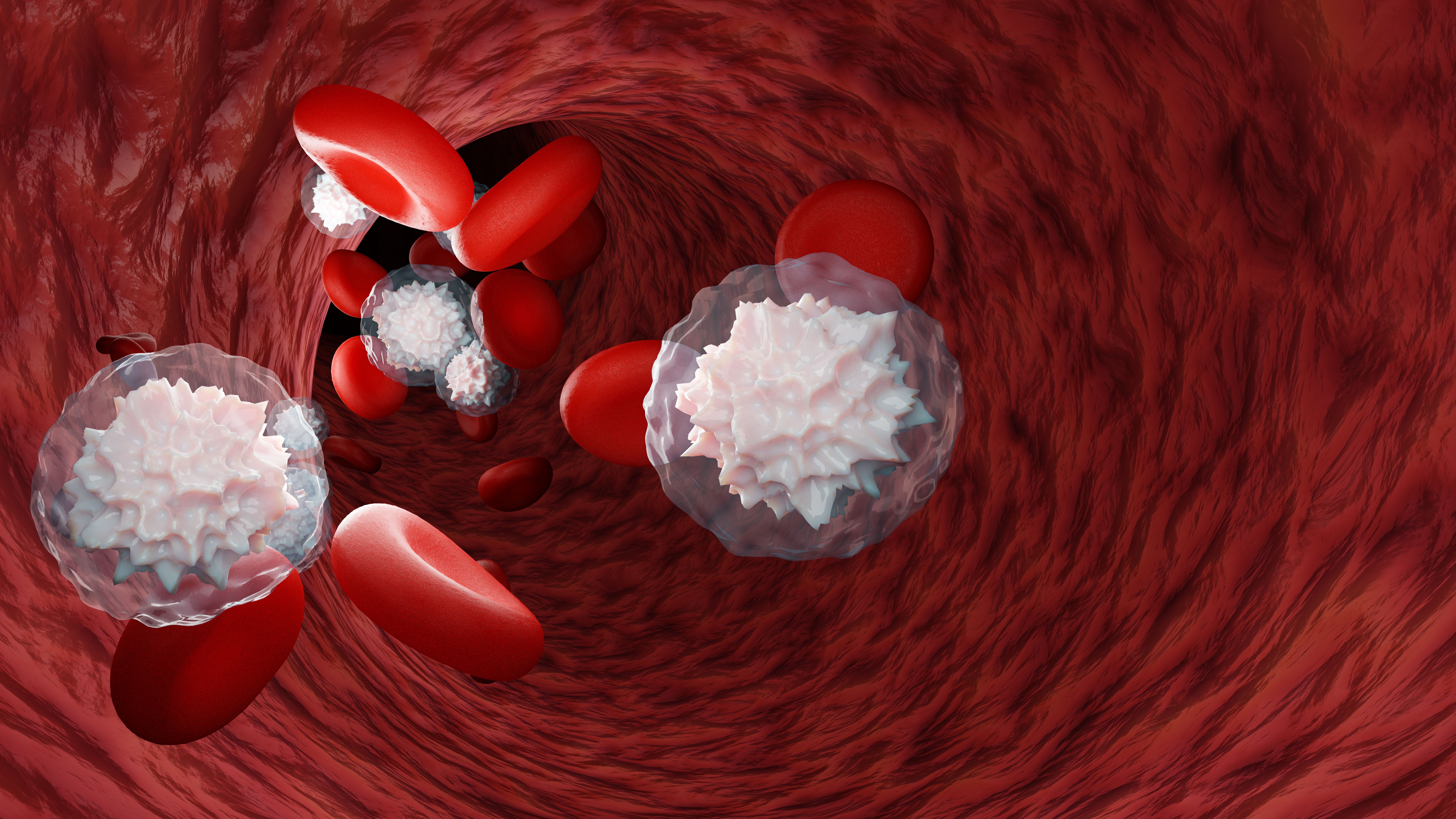Detectable MRD Is Prognostic of Poor HCT Outcomes in Adult ALL
Risk of relapse was significantly greater for those with acute lymphoblastic leukemia who had low minimal residual disease of less than 10-4 vs those with undetectable MRD, according to results of a retrospective study.

Patients who underwent hematopoietic cell transplant (HCT) for acute lymphoblastic leukemia (ALL) who had low minimal residual disease (MRD) were more likely to relapse versus those with undetectable MRD pre-HCT, according to results of a retrospective study presented at the 2023 Transplantation & Cellular Therapy Meetings.1
In 158 patients with ALL who were assessed for MRD by next-generation sequencing (NGS) at 10-6 sensitivity, risk of relapse was significantly greater for those who had low MRD of less than 10-4 compared with those with undetectable MRD [HR, 3.38; 95% CI, 1.84-6.19, P = .0001].
“In this analysis across 2 large transplant centers, we found that detection of MRD by NGS at a sensitivity of 10-6 offers significant prognostic value in adult [patients with ALL] undergoing transplant.” Emily C. Liang, MD, a fellow at the University of Washington, said in her presentation.
Patients who underwent HCT between January 2014 and April 2021 at Oregon Health & Science University and Stanford University were monitored for MRD in the multicenter retrospective study for up to 1 year post-HCT. They were assessed with the NGS-based ClonoSEQ assay.
“Given the variability and lack of large datasets in adult ALL, we sought to identify the prognostic value of NGS-based MRD in adult patients undergoing transplant,” said Liang.
MRD was based on the number of residual clonal cells per million nucleated cells, and was defined as the presence of detectable IgH clonotype in patients with B-cell ALL (B-ALL) or detectable TCRβ or TCRγ clonotype in T-cell ALL (T-ALL). MRD was categorized as undetectable (0), low (less than 10-4), high (between 10-4 and 10-3), or very high (greater than 10-3).
Relapse of leukemia was defined as morphologic relapse based on at least 5% blasts in peripheral blood or bone marrow, or clinical relapse based on initiation of treatment for recurrence by the treating physician.
The demographics of the 158 patients included 136 with B-ALL (86%) and 22 with T-ALL (14%). The majority were male and 29% had Philadelphia chromosome–positive disease. Of the study participants, 122 were assessed for MRD pre-transplant by bone marrow or peripheral blood. MRD was undetectable in 82 (67%), low in 24 (20%), high in 11 (9%), and very high in 5 (4%).
In a univariate analysis of likelihood of relapse based on this pre-transplant MRD, the HR for those with very high MRD pre-HCT versus undetectable pre-HCT was 6.98 (P = .0014). For those with high MRD, HR was 2.89 (P = .12), and for those with low MRD, HR was 3.56 (P = .01).
The 2-year overall survival rate was 72% and the 2-year cumulative incidence of relapse was 22%, whereas non-relapse mortality rate was 15%.
Patients with low or high MRD were then combined based on the similarity of their outcomes into a moderate MRD group ranging from less than 10-4 to less than or equal to 10-3. When looking at both MRD pre-HCT and post HCT, a Cox proportional hazard model showed that moderate pre-HCT MRD was associated with relapse compared with undetectable MRD (HR, 1.81; 95% CI, 1.16-2.82; P = .01), as was very high pre-HCT MRD (HR, 3.38; 95% CI, 1.84-6.19; P < .0001). Those with any level of detectable MRD after HCT had a significantly higher risk of relapse versus those whose MRD remained undetectable (HR, 4.60; 95% CI, 3.01-7.02; P < .0001).
A landmark analysis of MRD level at day 90 post-HCT was also predictive of relapse. “Detectable MRD post-[HCT] at day 90 was very predictive of relapse, even more so than MRD pre-[HCT] level,” Liang said in her presentation.
“The cumulative incidence of relapse by 2 years for patients with undetectable MRD pre-[HCT] and undetectable day 90 MRD post-[HCT] was less than 10%,” she said. “In contrast, in patients who entered transplant with very high MRD pre-[HCT] and who were also MRD positive at day 90, the cumulative incidence of relapse by 2 years was nearly 60%. And lastly, even in patients who entered transplant with undetectable MRD pre-[HCT] but who developed day 90 MRD post-[HCT] at a detectable level, the cumulative incidence of relapse was nearly 30%.”
Patients with undetectable MRD at day 90 also had a less than 10% risk of death from leukemia at 1 year post-transplant, whereas those with detectable MRD at day 90 had approximately 20% to 30% cumulative incidence of leukemia-specific death after 1 year.
“Detectable pre-transplant MRD, even at a low level of less than 10-4, increases the risk of post-transplant relapse, and detectable MRD post-[HCT] at any level substantially increases the risk of relapse regardless of MRD pre-[HCT] level,” Liang stated. “In conclusion, NGS-based MRD aids in risk stratification and can inform treatment decisions surrounding transplant.”